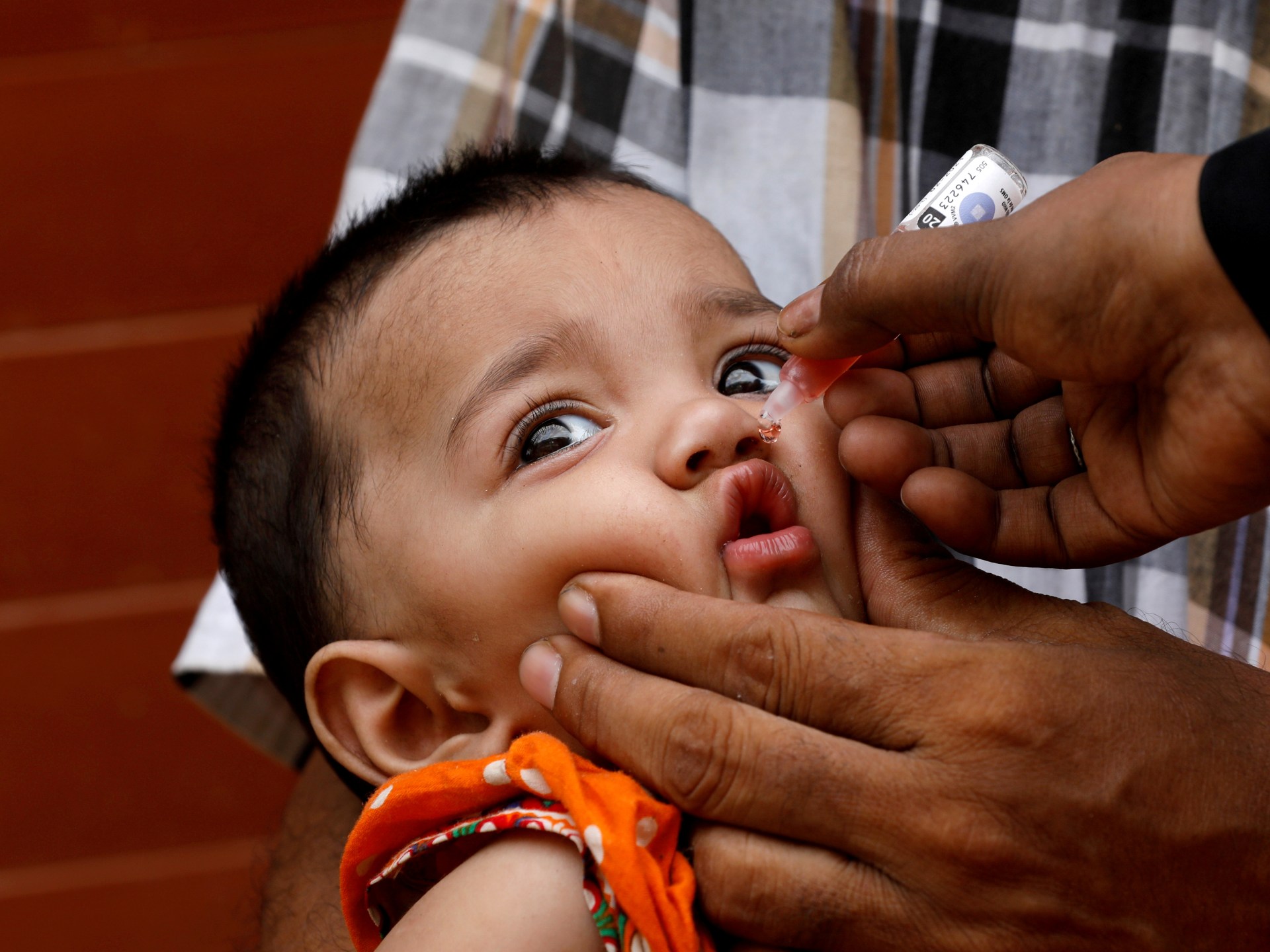
[ad_1]
On Tuesday, August 30 at 19:30 GMT:
Around the world, new outbreaks of poliovirus are threatening to set back decades of progress made in nearly eradicating the disease.
The latest cases are worrying for public health officials who say the spread of the virus is being aided by the decline in childhood immunisation due to the COVID-19 pandemic and various forms of vaccine scepticism.
In recent months, poliovirus has been found in New York state, London and other places where the disease had been thought of as a relic of the past.
Two years ago, Africa was declared free of wild poliovirus. But this year, new cases have been detected in Malawi and Mozambique. In Afghanistan and Pakistan – the two remaining countries where polio is considered endemic – gains made by eradication campaigns have been reversed.
Polio is a highly infectious disease with no cure. Infections that result in permanent paralysis are rare, and some cases can be fatal. Polio spreads through person-to-person contact, is largely asymptomatic, and mainly affects children under five years of age.
Polio epidemics were once a widespread source of public fear during the early 20th century. The disease paralysed an estimated 600,000 people each year around the world by the 1950s. Global cases dropped after the development of the first polio vaccine in 1955.
In this episode of The Stream, we’ll look at the new rise in polio cases and what’s being done to stop its spread.
On this episode of The Stream, we speak with:
Dr. Hamid Jafari, @Dr_HamidJafari
Director of polio eradication, WHO Eastern Mediterranean Regional Office (EMRO)
Wesley Hazlitt
President, Post-Polio Network in Manitoba
Dr. Rose Gana Fomban Leke
Chair, African Regional Commission for the Certification of the Eradication of Poliomyelitis (ARCC)
[ad_2]
Source link




